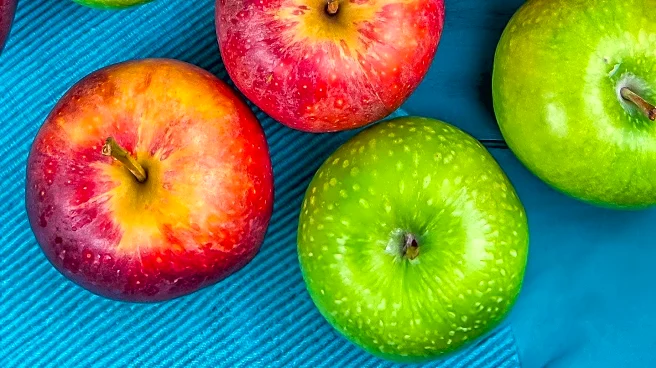What's Happening?
Researchers at William Paterson University in New Jersey, supported by the Centers for Disease Control and Prevention (CDC), have identified watercress as the most nutrient-dense food globally. The study analyzed various foods against 17 essential nutrients, including fiber, protein, iron, and key vitamins such as C, E, and K. Watercress scored a perfect 100% of the recommended daily intake for these nutrients, surpassing other foods in nutrient density. It contains more vitamin C than oranges and lemons, more calcium than milk, and is rich in antioxidants that protect against disease. Despite its nutritional benefits, watercress remains underrated in everyday cooking, although it is widely cultivated and available year-round in Europe.
Why It's Important?
The identification of watercress as the world's healthiest food highlights its potential to improve dietary habits and public health. With its high nutrient density and low calorie count, watercress offers a simple way to enhance nutrient intake without increasing caloric consumption. This discovery could influence consumer choices, encouraging the inclusion of watercress in diets for its health benefits. The study may also impact agricultural practices and market demand, as watercress could gain popularity as a cost-effective superfood. Its versatility in cooking further supports its potential to become a staple in health-conscious diets.
What's Next?
As watercress gains recognition for its health benefits, it may see increased demand in the U.S. and globally. This could lead to expanded cultivation and availability, potentially affecting pricing and accessibility. Nutritionists and health advocates might promote watercress as a key component of balanced diets, influencing dietary guidelines and public health campaigns. The food industry could respond by incorporating watercress into products and recipes, capitalizing on its newfound status as a superfood. Consumers may begin to explore creative ways to integrate watercress into their meals, enhancing their overall nutrient intake.
Beyond the Headlines
The study's findings on watercress could have broader implications for food labeling and marketing strategies. As consumers become more aware of nutrient-dense foods, there may be a shift towards transparency in nutritional information and the promotion of lesser-known superfoods. This could challenge the dominance of traditional superfoods in the market, encouraging diversity in dietary choices. Additionally, the environmental impact of increased watercress cultivation could be explored, considering its potential role in sustainable agriculture practices.












